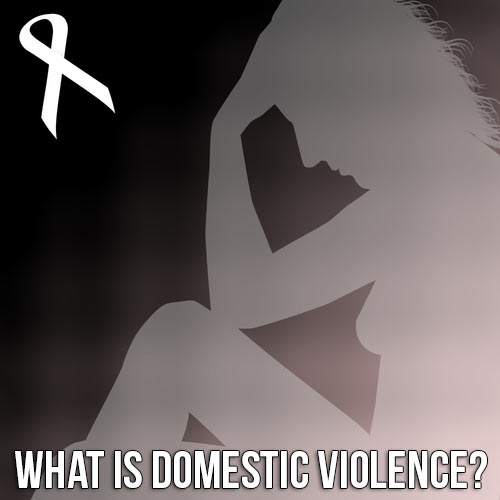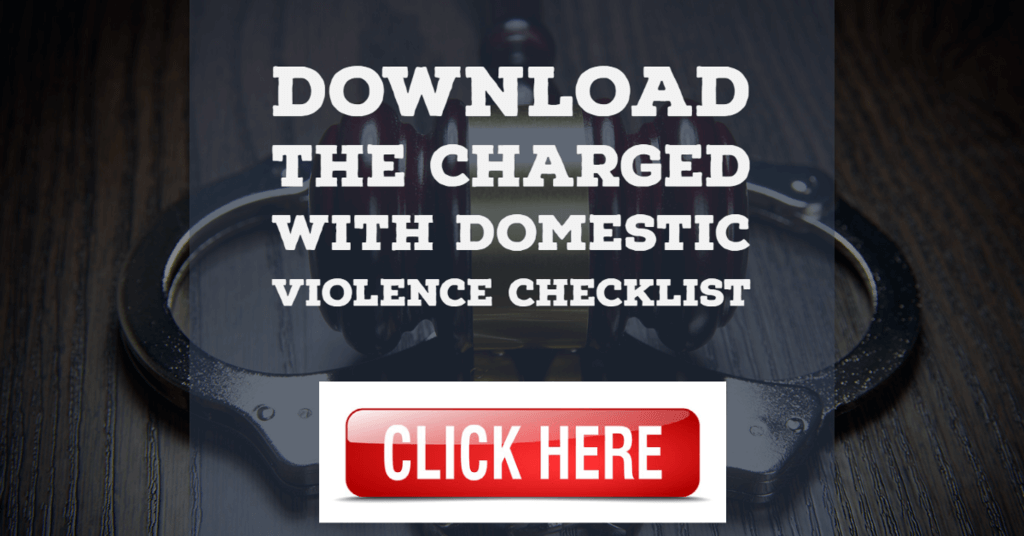In this guide, you are going to get direct and to the point information about surviving domestic violence in Nevada. We’ve used these same techniques to help thousands of domestic abuse survivors successfully win their custody, divorce, restraining order, and criminal cases.
Now, this guide isn’t full of technical legal information. We wrote it so that anyone going through a domestic violence case could use this information to represent themselves.
So, whether you or someone you know is a survivor of domestic abuse, this guide is here to help.

Nevada law defines domestic violence as a violent crime committed in the context of an intimate relationship. But you don’t have to be married to the abuser for something to be considered domestic abuse. Domestic violence, by definition, occurs against people known to the perpetrator, such as parents, spouses, significant others, and children.
It is also essential to know that domestic violence can occur without physical abuse. Specifically, domestic abuse can occur where someone is emotionally, financially, mentally, sexually, and physically traumatized.
Physical abuse that rises to domestic violence can include kicking, punching, slapping, shoving, pushing, or any other act intended to hurt or injure.
Sexual abuse can also be charged as domestic violence. For example, forcing or pressuring a significant other to engage in sexual relations can be charged as domestic violence.
Financial abuse is often a sign of domestic violence. Financial abuse can include such acts as controlling a significant other’s paychecks or bank accounts.
Emotional abuse often gets as considered domestic violence too. Emotional abuse can include significant and repetitive name-calling, excessive criticizing of your appearance, threats to have your children taken by CPS or INS, and your significant other threatening your financial and physical well-being.
Property destruction and injuring your family pets is another form of domestic violence in Nevada.
So now that you know what is considered domestic violence, let’s look at some of the statistics.
NEVADA DOMESTIC VIOLENCE STATISTICS

There’s no other way to say it, Nevada is one of the worst states for domestic violence.
In 2018, Nevada ranked second in the nation for women involved in violent relationships and fourth in the country for women killed as a result of domestic abuse.
A recent study found that domestic abuse was most prevalent in Clark County, Nevada, occurring almost three times more often than in any other Nevada jurisdiction.
In Nevada, domestic violence knows no race or ethnicity. While many of those reporting domestic abuse identified themselves as White or Caucasian, an equal number identified themselves as Hispanic or Black.
Employment appears to have little to do with domestic abuse. Almost the same number of victims self-reported as being employed as those who said they were unemployed.
For more information about domestic violence statistics in Nevada, click here.
The bottom line? If you are living in Nevada, the chances are that you know someone, or you are a domestic violence victim.
WHY DO VICTIMS STAY WITH THEIR ABUSERS?

One of the most harmful stereotypes of domestic violence is that people stay with their abusers because they choose to. But in our research, we found that this is not the case.
There are many reasons why victims stay in violent relationships. The most often reported motive that people remain in a destructive relationship is that victims are afraid of “the next time” and that they will get beaten more when it happens.
Victims also report they are afraid the perpetrator will kill them or hurt their family members or friends if they leave.
Many times, victims are dependent on the aggressor for food or shelter and afraid to leave because they may be homeless and hungry.
Some victims report that nobody believes them, and therefore they must stay.
When children are involved, victims report not being able to leave for fear that their children will be without the other parent, or they cannot raise the children alone.
Many victims fear their abuser will harm themselves or commit suicide if they leave.
Often, victims believe things will get better or that nobody else will love them.
Many women report feeling ashamed or embarrassed that they are the victim of abuse and are afraid to leave.
Some victims report the fear of being deported or having their children taken away as a reason for staying in an abusive relationship.
Staying with an abuser is just one myth. For more information about domestic violence myths, keep reading.
TOP MYTHS ABOUT DOMESTIC VIOLENCE IN NEVADA BUSTED!
MYTH #1 : The victim must be lying about the abuse because the victim didn’t leave the relationship.
FACT : As we said above, there are MANY reasons why victims stay with their abusers.
And did you know that most victims leave their abusers multiple times?
Statistics show that victims leave their abusers at least seven times before the relationship permanently ends. Getting out of an abusive relationship is the riskiest at the point of departure.
Victims often fear more significant consequences for leaving, and many victims are financially dependent on their abusers, making it significantly more challenging to end their violent relationship.
Getting the right legal advice early on can be the difference between leaving a violent relationship and returning to abuse.
MYTH #2 : The alcohol and drugs made the abuser violent.
FACT : Blaming violence on alcohol and drugs is merely an excuse. Alcohol or drugs doesn’t make someone violent!
Domestic violence is a choice by the perpetrator to exert power and control over their significant other.
Keep in mind that most of the time, domestic violence is not just physical, and getting drunk or high does not excuse physical abuse in any form.
Although there is no reasonable doubt that substance abuse increases the frequency of domestic violence, it is not the cause of violence.
MYTH #3 : Men only commit domestic violence.
FACT : This is an old stereotype entirely based on gender roles. The reality is that domestic violence knows no gender or race.
Reports show that one in seven men are the victims of domestic violence. Men have reported physical and sexual abuse at a rate of approximately 3 in 10.
It is this stereotype that often leads men to be falsely accused of domestic violence when trying to defend themselves from their violent partner.
MYTH #4 : Domestic violence only occurs in poor and uneducated areas.
FACT : Domestic violence knows no social status or educational status. Unemployment does not cause domestic violence.
Domestic violence is as likely to occur among affluent, well-educated individuals as it is among those who are unemployed or lack formal education.
MYTH #5 : The victim can dismiss the domestic violence charges against their abuser.
FACT : This is wildly incorrect. Nobody can dismiss the domestic violence charges against an abuser. It is 100% up to the prosecutor and the criminal judge whether or not a criminal case against a perpetrator of domestic violence is dismissed.
Since we’ve busted the myths, let’s talk about what you can do to protect your rights if you are a domestic abuse survivor.
INFORMATION ABOUT YOUR LEGAL RIGHTS
Nevada has adopted the Nevada Victims Bill of Rights, which protects your rights as a survivor of domestic violence.
As a survivor of domestic violence in Nevada, you have the right to know the status of the case involving you. Specifically, you have the right to know the time and date of scheduled court hearings and what the release date of your abuser happens to be.
You have the right to be free from intimidation. This right includes protection by a restraining order as well as the right to be in separate waiting rooms and away from your abuser during court hearings.
Compensation for injuries is one of the most significant rights available. The criminal court may order your abuser to pay you restitution for damages and injuries caused to you.
You also have the right to have any impounded property returned to you. For example, your vehicle should be returned to you if your abuser gets arrested in your car.
If you are subpoenaed to court to testify against your abuser, you have the right to a witness fee.
In addition to the rights stated in the Victims Bill of Rights, you also have the right to be present and represented at all stages and in all cases involving your abuser. You also have the right to be represented by an attorney of your own and the right to have a victim advocate present.
Again, knowing and understanding your legal rights can be the difference between successfully surviving domestic abuse and being stuck in an abusive relationship or left along with no legal protection.
HOW TO GET CUSTODY OF YOUR CHILDREN AFTER SURVIVING DOMESTIC ABUSE

Domestic violence affects not only the perpetrator and the victim, but it can also change your children in many ways.
For example, if your children get exposed to domestic violence, they are more likely to be involved in a violent relationship as an adult.
Not only do abusers abuse their significant others, but a recent study found that 44% of children are also abused when domestic violence is present in their home. In 2016, 1750 children died as a result of domestic violence in their homes. Most of those children were under one year old. In a recent national survey, 50% of men who abuse their wives also abuse their children.
Children exposed to domestic abuse are more likely to have behavior problems. These can include significant delinquency as well as mental and emotional issues.
Therefore, Nevada law seeks to protect parents who are the victim of domestic abuse.
The law presumes that if domestic violence has occurred by clear and convincing evidence, the abuser should not have custody of the children.
While this may sound simple, it can often be challenging to convince your family court judge that domestic violence occurred unless your abuser has a domestic abuse conviction.
By this point, you might be asking, “What happens if there is no conviction of domestic violence but just allegations of abuse?” The answers are not straightforward.
First, if you are going through a child custody case and domestic violence is involved, the judge will try to figure out whether your children were affected by the violence. He or she may have your children interviewed, may review CPS records, and review police reports.
But we know that not every case has a history with CPS or law enforcement, and not every case has children who are old enough to know and remember domestic violence occurring.
The good news?

Even if you have an old domestic violence case, your custody judge will consider the history of domestic violence, and it can be used against your ex to award you primary or sole custody of your children.
For example, if there are no convictions or old convictions of domestic violence, the judge can consider witness statements, photographs, journals, and calls to 9-1-1 as evidence that domestic violence has been ongoing in your relationship.
Likewise, if there is an old conviction against your ex for battery or domestic violence, the judge will want to see that your ex engaged in counseling or attended anger management classes before awarding your ex custody.
Until your ex can show that no domestic violence occurred, or that the domestic violence that happened was a long time ago, you should ask the judge for the following regarding custody:
- That your ex be required to have supervised visitation with the children, especially if your children are young and experienced the violence.
- That your ex be required to engage in therapy, anger management classes, and domestic violence classes to see your children without supervision.
- That if the judge orders mediation for you to talk about custody, that the arbitration be a shuttle mediation. All this means is that you and your ex will NOT be in the same room to discuss visitation, holidays, and special times with your children. Instead, the mediator will relay offers back and forth between you and your ex.
- That any custody exchanges occur in a public place like a police station
- That family members or friends facilitate exchanges of the children so that you and your ex do not see each other.
- That child support be paid through direct deposit or the District Attorney’s Child Support Enforcement Division
- That your children be enrolled in counseling or therapy to deal with any exposure they may have to the abuse.
Please keep in mind one more important piece of information: While it may be tempting, you cannot just take your children and leave Nevada. To leave Nevada with your children, you either need your ex’s consent or a Court order.
We know this is crazy, but it is the law. If you leave with your children without a court order or court permission, YOU could get charged with felony kidnapping.
Now, we aren’t going to get into the exact details of relocation cases here. Just know that if you must leave Nevada, you need to talk to a lawyer right away to protect your rights and your well-being.
We know that separating from an abuser can be scary, not just for you, but for your children too. Therefore, it is important to get solid legal advice from the beginning of your case, especially if you are the victim of domestic violence in Nevada.
HOW TO GET A RESTRAINING ORDER IN A NEVADA DOMESTIC VIOLENCE CASE

Getting a restraining order is just one piece of the justice system available to you as a survivor of domestic violence.
It is important to note that there does not need to be a criminal case pending or even a divorce or custody action filed for you to get a restraining order. A protective order may be granted even if there is no divorce, child custody, criminal, or other case pending.
It is also essential to recognize that you do not have to be married to your abuser to get a restraining order. Being involved in an intimate relationship is enough for the Court to consider granting a restraining injunction.
But, before you file for a restraining order, there are some things you need to know:
If your abuser was arrested for domestic violence, the criminal judge might issue an emergency restraining order for up to 72 hours. Again, this restraining order is only in place for 72 hours, and it will be up to you to ask to have the restraining order extended either through the criminal court or through the family court.
You do not need to have a criminal restraining order in place to ask for a restraining order from the family court.
Instead, you can go to the family court TPO office and fill out the paperwork to ask for a temporary restraining order. If you file for a restraining order at the family court, be sure to include a detailed explanation of why you fear for your safety or the safety of your children.
Once the paperwork gets filed, your case will be immediately reviewed by a judge to determine whether to grant the restraining order on a short-term basis. For many survivors, it is critical to have an attorney present to assist with filling out the paperwork and presenting the initial case to the judge.
Many times, the court will issue a restraining order without giving the other side notice. You need to go to court, fill out the application, and talk to the judge. Usually, the restraining order will be good for about a week.
If you want to extend your restraining order, the perpetrator will have to be served with a notice to appear for an extension hearing. At the extension hearing, your ex will be able to present his or her side of the story.
At the extension hearing, you can ask the judge to extend the restraining order for up to one year. Typically, the judge will want to hear about the incidents that led to the restraining order. It can be helpful to file proof of the domestic violence with your restraining order judge to support your request for an extension hearing.
If a restraining order is issued or extended, the family court will be furious if your ex violates the restraining order, and violations of protective orders are a crime.
Stated another way, if your significant other violates the restraining order, they can expect to get charged with a misdemeanor. The penalty for such a crime is up to 6 months in jail or a $1,000 fine. Multiple violations of a TPO can result in felony charges.
Violating a protective order can also result in a contempt of court case. This crime requires a hearing and could result in jail time and fines.
Examples of restraining order violations include sending letters, texts, flowers, or even offering an apology. If your ex tries to contact you, even to apologize, you need to let your attorney and court know right away.
Again, it is essential to remember that as a victim of domestic violence, you have a right to be represented by an attorney at the initial hearing and any extension hearing. You also have the right to have a victim advocate present. And you should notify your lawyer if your ex violates the restraining order.
TIPS FOR DEALING WITH CHILD PROTECTIVE SERVICES IN DOMESTIC ABUSE CASES
It is not unusual for law enforcement to contact child protective services where there is ongoing domestic violence.
If child protective services believe that you are not taking adequate steps to protect your children from abuse, protective services can take your children away from you and your abuser and put them in foster care.
Now we don’t offer this advice to frighten you, and we could get into a whole argument about how removing children from victims of domestic violence is just re-victimizing a victim, but that exceeds the scope of this guide.
Know that for now; if CPS shows up and gets involved with your family, you have options.
First, CPS might offer you services and work informally to protect your children from domestic violence. They might have safety providers check to be sure your abuser is not around. It could also mean assisting you in relocating with your children or helping you fill out restraining order paperwork. It could also mean helping you find resources such as therapy and domestic violence classes.
Second, if CPS does not believe you will keep your children safe, your children may be formally removed, which means you will have a Court hearing. If this happens, we strongly suggest that you consult with a lawyer to assist in navigating the court process.
Generally, the goal of any protective services case is to make it safe to return the children to the care of their parents. You may have to work on a case plan with CPS to have your children returned to you. Again, this is where having legal representation can prove invaluable.
WIN YOUR DIVORCE CASE AFTER SURVIVING DOMESTIC ABUSE

No question, deciding to get a divorce after being the victim of domestic violence can be super scary. The situation is made worse in Nevada because it is a no-fault divorce state.
What does this mean in regular words?
Divorce law in Nevada says that your divorce judge can’t consider whether your spouse is a bad person when dividing up your assets, debts, or awarding alimony.
Put another way, you could be the best spouse in the world, and your ex could be the most horrific spouse in the world, and the Court can’t consider your ex’s harmful acts and abuse to give you more alimony or more of the assets.
Instead, the Court is required to divide your assets and debts equally. Your family court judge will base an award of alimony based on many factors, none of which include whether your ex is violent.
So, how is domestic violence significant in a divorce? Believe it or not, it can be vital in deciding who gets what assets and in terms of awarding an overall divorce settlement.
First, if you can establish that your spouse is violent and residing in the home with your spouse is not safe for you and your children, you can ask the Court for exclusive possession of your marital residence. What this means is that your ex will have to find somewhere else to live while your divorce case is pending.
When you ask for exclusive possession of your residence, you can also request that your spouse be required to pay your living expenses and the expenses associated with the home, at least while the divorce is pending.
Second, if you are a victim of domestic violence, you can bring marital torts as a cause of action in your divorce complaint.
We know, more legal speak.
As part of your divorce case, you can sue your spouse for sexual assault, or sexual violence, battery, kidnapping, emotional distress, and other tort claims.
Now keep in mind that divorce cases are civil cases, so you will need to ask for damages as a result of the abuse. To prove your damages, you may need to provide proof of medical expenses or therapy records.
However, in most cases, when a spouse gets sued for a marital tort, the abuser cannot afford to pay a substantial award of damages, which is where you can ask for an unequal division of assets.
For example, let’s say you can prove that the domestic battery in your case caused you $50,000 in medical expenses. You sue your spouse for assault, battery, and emotional distress in your divorce.
Now let’s say that as a result of your assault, battery, and emotional distress claims, the judge awards you $150,000. $50,000 to compensate you for your medical bills and $100,000 for your pain and suffering. But your spouse doesn’t have $150,000 to pay you. Your spouse does have a 401(k) worth $500,000. You can ask for your share of the 401(k) ($250,000) AND an extra $150,000 of your spouse’s share of the 401(k) to compensate you for your damages.
Finally, if your case is one where financial abuse was prevalent, you can use this to show the judge that your spouse prohibited you from working or did not allow you to obtain the same education. You can argue that due to your spouse’s financial abuse, alimony is due to you.
And if we haven’t said it enough, having competent and experienced legal counsel on your side is essential.
HOW TO PREPARE YOUR COURT CASE IF YOU HAVE SURVIVED DOMESTIC ABUSE

Regardless of the type of case (divorce, custody, or restraining order), judges can and should hear all the proof you have that domestic violence has occurred or is ongoing.
This list is not an exhaustive list of the type of proof judges will consider, it is comprehensive.
First, probably the most compelling evidence will be police officer materials, including police reports, arrest reports, 911 transcripts or audio recordings, impound reports, and dispatch logs. Officer testimony is also very compelling, so it is crucial that even if you can obtain documents that show abuse, you subpoena the police officers and ensure that they are present for any trials regarding custody, CPS or divorce.
Next, you will want to provide copies of any restraining orders and restraining order applications. Make sure to include copies of any emergency orders, criminal protective orders and any orders granting extensions of the restraining order. Not only will you want to provide any protective orders given to you, but you should also try to obtain any protective orders issued against your abuser in prior cases.
Another way to demonstrate abuse is to provide medical evidence in the form of documents from emergency room visits, therapy records, medication records, and prescription records. Just like police officers, testimony from medical professionals about the extent of injuries, the nature of therapy, the treatment received, and your diagnosis may also be essential to establish your case.
Photographs are significant for demonstrating domestic abuse. Not only should the pictures show the extent of the injury, but they should also show any soiled or stained clothing or any other disturbance to the survivor. In addition to photographs of the survivor, images that support the victim’s story is essential. Make sure to include empty bottles of alcohol, drugs, holes in the wall, turned over furniture, broken dishes, or any other scenarios supporting the victim’s statement.
Another way photographs are helpful is to show the size comparison of the parties, including driver’s license photos, family photos, or other pictures that can show the size disparity of the parties. Any images that also show the vulnerability of the survivor are helpful. Also, pictures of the perpetrator in police custody can be very persuasive.
Witness testimony is another way to present compelling evidence of domestic abuse. When presenting witnesses, you will want to secure the testimony of those who have seen the abuse firsthand like neighbors, friends, and family members. You may also want to bring witnesses to testify about injuries they have observed.
Co-workers can often provide testimony about injuries and behavior of survivors, and co-workers of perpetrators can give evidence about admissions that perpetrators may have made regarding the abuse and the abuser’s demeanor.
Witnesses who have heard statements from the victim about the perpetrator’s power and control or threats the perpetrator may have made to the victim can also be very compelling.
People who have assisted the survivor in leaving the perpetrator are also quite helpful. Usually, they can testify about calling law enforcement, helping survivors get medical attention and helping the survivor to leave the perpetrator.
The abuser’s criminal records can also be very persuasive to show a pattern of abuse, even more so if the abuser has a history of domestic violence or other violent crimes. Judgments of conviction are self-authenticating, which means you can show the judge that the abuser has a previous conviction of domestic violence and you will not need additional witnesses to support this claim.
Finally, school records may also help demonstrate injuries to children or assist in providing evidence that your children have witnessed abuse.
Be sure to provide all your evidence to your lawyer or the prosecutor in your case well in advance of any court hearing to ensure your judge has enough time to review your proof before Court.
RESOURCES FOR DOMESTIC VIOLENCE SURVIVORS

We understand that as a survivor of domestic abuse, it is not always easy to leave your abuser or initiate a Court proceeding.
While Nevada may rank among one of the worst states for incidents of domestic abuse, there are a ton of resources available for survivors.
We have included a few resources in this guide, but we also remind you that if you are in imminent danger, you should not hesitate to call law enforcement or 9-1-1.
In Las Vegas, there are five domestic violence and abuse shelters:
- SafeNest Hotline Number (702) 646-4981
- Las Vegas Rescue Mission (702) 382-1766
- Shade Tree (702) 385-0072
- Angel’s Power, (866) 551-6893
- Dock Ellis Foundation, (888) 999-3870
SafeHouse also offers services for survivors. SafeHouse provides an excellent directory of available resources for almost every different ethnicity, gender, and age range in our population. Check out their resource guide here: SafeHouse Links
And of course, if you or someone you know needs help with a custody case, divorce, criminal matter, or restraining order, call us, text us or fill out our online form. We can help.

Frequently Asked Questions
What should I do if I am in immediate danger from my abuser?
If you are in imminent danger, call 911 or local law enforcement right away. Your safety should be the top priority.
How can I get legal help with custody, divorce, or restraining orders related to domestic abuse?
Consult with an experienced family law attorney who regularly handles domestic violence cases. Having legal representation can be critical to protecting your rights and safety.
What steps can I take if Child Protective Services gets involved due to domestic violence?
If CPS removes your children, request a court hearing immediately. Consider hiring an attorney to help navigate the legal process and comply with CPS requirements to regain custody.
What kind of evidence can I present in court to prove domestic abuse?
Useful evidence includes police reports, medical records, photos of injuries, restraining orders, witness testimony, and your abuser’s criminal history. Supply all proof to your attorney well before any hearings.
What emergency resources are available for domestic abuse victims in Nevada?
There are domestic violence shelters, hotlines, and advocacy groups that can help with emergency housing, counseling, legal aid, and more. See the guide’s Resources section for specific referrals.
How can I stay safe when leaving an abusive relationship?
Leaving is the most dangerous time, so have an exit plan. Consider getting a restraining order, changing locks, staying with someone else, and avoiding places the abuser may look for you.
What are my legal options if my abuser violates a restraining order?
Violating a restraining order is a crime. Notify your attorney and the court immediately if the order is violated. Your abuser could face contempt of court charges, fines, and jail time.
What steps can I take to get custody of my children?
Request sole or primary custody and supervised visitation for your abuser. Provide evidence of domestic violence. Ask that custody exchanges occur in public with third-party facilitators.
How do I prove domestic violence if there are no police reports or convictions?
Other evidence like medical records, witness statements, photos, journals detailing abuse, and 911 calls can still demonstrate a pattern of domestic violence.

Glossary
Domestic Violence – Violent crimes committed against a spouse, intimate partner, cohabitant, parent, or child. Includes physical, sexual, emotional, and financial abuse.
Protective Order – A court order designed to protect victims of domestic violence and abuse. Also called a restraining order or injunction. Prohibits contact by the abuser.
CPS – Child Protective Services. The agency responsible for child welfare, including investigating claims of abuse and neglect.
TPO – Temporary Protective Order. Emergency protective order issued by a judge, usually lasting 1 week.
Primary Custody – When one parent has main physical and legal custody of a child. The child lives primarily with them.
Supervised Visitation – Court-ordered visitation where a neutral third party monitors interactions between the child and parent. Used when there are safety concerns.
Shuttle Mediation – Method of mediation in child custody disputes where parents are in separate rooms. The mediator communicates offers between parties.
Marital Torts – Civil lawsuits filed within divorce proceedings seeking damages for acts occurring during the marriage, like domestic abuse. Allows for unequal asset division.
Exclusive Possession – Court order granting one spouse exclusive use and possession of the marital home during a divorce. The other spouse must vacate.
No-Fault Divorce – Divorce in which neither spouse must prove fault or wrongdoing. Assets are divided equitably regardless of behavior.

Additional Resources for You
It’s important for our readers to know that our lead attorney, Molly Rosenblum Allen, Esq., has created a range of resources to assist those facing domestic violence issues. These resources offer valuable guidance and legal insights for various situations:
Domestic Violence Lawyer Las Vegas: This resource provides expert legal assistance for anyone seeking a domestic violence lawyer in Las Vegas. More information can be found at Rosenblum Law’s Domestic Violence Lawyer Las Vegas page.
Domestic Violence Plea Bargain: This guide provides insights into plea bargain options in domestic violence cases, a critical aspect for many facing charges. For more details, visit Rosenblum Law’s Domestic Violence Plea Bargain page.
How to Get Domestic Violence Charges Dismissed: A valuable resource for those looking to understand how domestic violence charges might be dismissed. Further information is available at Rosenblum Law’s page on getting domestic violence charges dismissed.
How to Get Your Gun Rights Back After a Domestic Violence: This resource is particularly useful for individuals seeking to restore their gun rights following a domestic violence incident. More information can be found at Rosenblum Law’s page on getting gun rights back after domestic violence.
What are the Chances of Beating a Domestic Violence Charge in Nevada?: This resource provides insight into the likelihood of successfully defending against a domestic violence charge in Nevada. Learn more at Rosenblum Law’s page on beating a domestic violence charge in Nevada.
Should I Request a Jury Trial for my Domestic Violence Case?: For those uncertain about the best course of action in a trial, this guide offers perspective on whether to request a jury trial in domestic violence cases. Further details can be found at Rosenblum Law’s page on requesting a jury trial for a domestic violence case.
Each of these resources has been crafted to provide specific, practical advice for those dealing with domestic violence issues, reflecting Molly Rosenblum Allen, Esq.’s commitment to helping those in need.

Offsite Resources You May Find Helpful
Here are some offsite resources that may be beneficial for a survivor of domestic abuse in Nevada:
SafeNest: Nevada’s Largest Domestic Violence Charity: This organization provides comprehensive services for people affected by domestic violence, including shelter, counseling, advocacy, and prevention education.
S.A.F.E. House Nevada: This organization provides shelter, advocacy, counseling, and other resources for survivors of domestic abuse in Southern Nevada.
Nevada Coalition to End Domestic and Sexual Violence (NCEDSV): The NCEDSV offers training, technical assistance, and advocacy, and is a resource for information about domestic and sexual violence in Nevada.
National Domestic Violence Hotline: This national hotline provides 24/7 support to victims and survivors of domestic and intimate partner violence.
Legal Aid Center of Southern Nevada: This organization provides free legal education, advice, and representation to individuals who cannot afford a private attorney.
Rape Crisis Center (Las Vegas, Nevada): This center provides support to survivors of sexual assault, including counseling, advocacy, and education.
Why You Still Haven't Hired a Las Vegas Domestic Violence Defense Attorney Yet
Watch this short video to take the next big step toward defending your rights against your domestic violence charge.

A Special Message from Our Lead Attorney

Molly Rosenblum, Esq
I want to express my deepest gratitude to you for taking the time to read through the Nevada Domestic Abuse Survivor Guide resources.
It’s a significant first step in recognizing your situation and seeking the help you deserve.
This journey can be difficult, but please remember you are not alone.
My team and I are here to provide you with the support and legal guidance you need.
We understand the complexities of domestic abuse situations and the legal intricacies involved, and we are committed to helping you navigate this challenging time.
Please reach out to us at (702) 433-2889.
Please don’t hesitate to call.
We can discuss your situation, answer any questions you might have, and start working on a plan to ensure your safety and legal protection.
Remember, the road to recovery may seem daunting, but every journey begins with a single step.
You have already taken that first step by educating yourself.
Let us guide you through the next ones.




